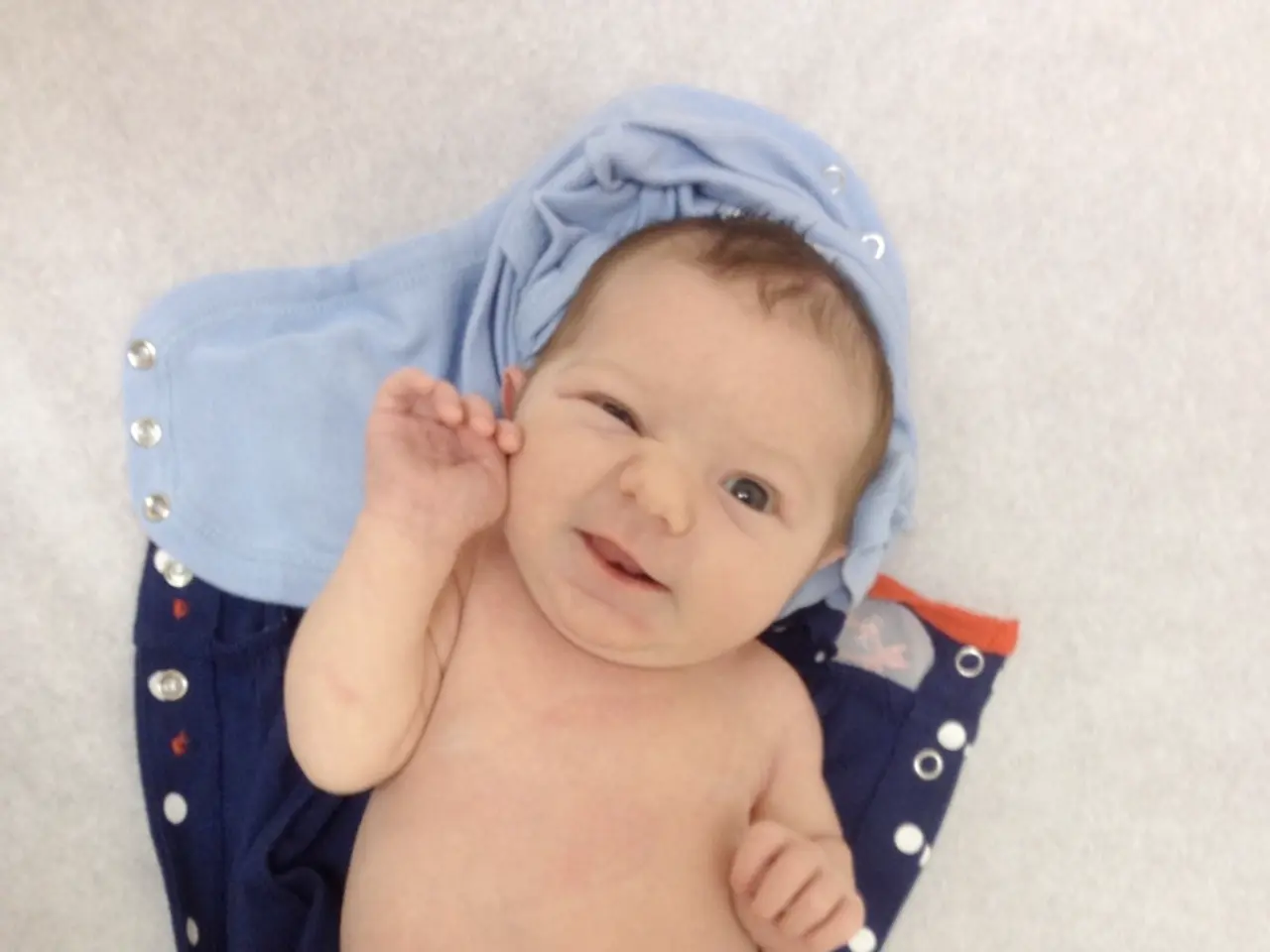Low Baby Temperature: Causes, Remedies, and Preventive Measures
New parents of premature or low birth weight babies should be vigilant about their infants' body temperatures, as these little ones are more susceptible to hypothermia. Hypothermia, a serious condition characterized by a drop in body temperature, can lead to breathing issues and, in extreme cases, death.
The average healthy body temperature for a baby is 98.6°F. However, in newborns, especially those born prematurely or with low birth weight, a body temperature below this mark could be a cause for concern. Factors such as a large surface-area-to-volume ratio, immature skin, a thin layer of insulating fat, poor vasomotor control, and reduced heat production make these infants more vulnerable to environmental factors and infections.
Symptoms of hypothermia in newborns can include lethargy or reduced activity, poor feeding, a weak or absent cry, blue discoloration of the skin (cyanosis), and feeling cold to the touch. If a baby exhibits any of these symptoms, it's crucial to seek immediate medical attention.
Preventing hypothermia involves a combination of environmental control and careful monitoring. Dressing a baby in seasonally appropriate clothing can prevent them from getting too cold. However, parents and caregivers should avoid overdressing the baby, putting them in front of hot radiators, or exposing them to intense heat to warm them.
In cases where a baby is struggling to regulate their body temperature, strategies such as skin-to-skin contact with a parent or caregiver, drying the baby, holding the baby skin-to-skin against a warm body, covering the baby with a blanket during skin-to-skin contact, and breastfeeding can be helpful.
If a baby's low temperature does not rise after these strategies, it's important to see a healthcare provider. In such cases, immediate rewarming using an incubator or a heated mattress may be necessary. For preterm babies, wrapping them in polyethylene immediately after birth can help prevent further heat loss. Close monitoring and supportive care in a neonatal intensive care unit (NICU) are crucial for managing complications and ensuring proper treatment.
It's essential to address the cause of a low body temperature in a baby quickly, especially for newborns. Inaccurate temperature readings may occur due to incorrect methods or equipment, and using a variety of methods or thermometers may help address inaccuracies. Ideal baby temperatures can vary, and it's recommended to consult a healthcare provider for advice on the ideal temperature for a specific baby.
Remember, babies are vulnerable to both cold and overheating. So, it's crucial to maintain a balanced environment for your little one. Rectal temperature readings offer the most accurate information for babies under 2 years old. Warming devices such as an over-the-bed warmer, heat lamp, open bed with a radiant warmer, or incubator may be recommended if the above strategies fail.
In conclusion, hypothermia in newborn babies is a serious condition that requires prompt identification and treatment. By understanding the causes, symptoms, and recommended treatments, parents and caregivers can take the necessary steps to keep their babies warm and healthy. Always consult a healthcare provider if you have concerns about your baby's temperature or overall health.
- Caregivers must be vigilant about newborns' body temperatures, especially those with low birth weight, as they're more susceptible to hypothermia.
- A body temperature below 98.6°F could be a cause for concern, particularly in preterm infants due to factors like large surface-area-to-volume ratio and poor vasomotor control.
- Symptoms of hypothermia in newborns include lethargy, poor feeding, weak or absent cry, blue discoloration of skin, and feeling cold to the touch.
- Preventing hypothermia involves environmental control and careful monitoring, such as dressing a baby in seasonally appropriate clothing.
- Parents and caregivers should avoid overdressing the baby, putting them in front of hot radiators, or exposing them to intense heat.
- Skin-to-skin contact with a parent or caregiver, drying the baby, breastfeeding, and covering the baby with a blanket during skin-to-skin contact can help regulate body temperature.
- If a baby's low temperature does not rise after these strategies, immediate medical attention or rewarming using an incubator or heated mattress may be necessary.
- For preterm babies, wrapping them in polyethylene immediately after birth can help prevent further heat loss.
- Close monitoring and supportive care in a neonatal intensive care unit (NICU) are crucial for managing complications and ensuring proper treatment.
- Inaccurate temperature readings may occur due to incorrect methods or equipment; using a variety of methods or thermometers may help address inaccuracies.
- Ideal baby temperatures can vary, so it's recommended to consult a healthcare provider for advice on the ideal temperature for a specific baby.
- Babies are vulnerable to both cold and overheating, so maintaining a balanced environment is crucial.
- Rectal temperature readings offer the most accurate information for babies under 2 years old.
- Warming devices such as an over-the-bed warmer, heat lamp, open bed with a radiant warmer, or incubator may be recommended if the above strategies fail.
- Addressing the cause of a low body temperature quickly is essential for newborns, as untreated hypothermia can lead to breathing issues and, in extreme cases, death.
- Parents and caregivers should be aware of chronic-diseases such as HIV, diabetes, chronic kidney disease, asthma, and respiratory conditions, which can impact a newborn's ability to regulate their body temperature.
- Chronic-diseases like psoriasis, mental-health conditions such as depression, and sleep disorders like sleep apnea may require therapies-and-treatments that impact family-health, mental-health, skin-care, and the workplace-wellness of parents and caregivers.




